Why Does My Dog Act Like A Cat? 9 Reasons
The rivalry between dogs and cats is a tale as old as time, forever etched in stone as mortal enemies. They are so fundamentally opposed that they have earned a reputation as fierce rivals, and after all, the phrase “fighting like cats and dogs” didn’t come from nothing.
Cats are more reclusive and like doing their own thing while dogs are devoted, fiercely loyal, and social creatures. The difference in these behavioral traits is so vast that it is no surprise that many cats don’t get along with dogs, and vice versa.
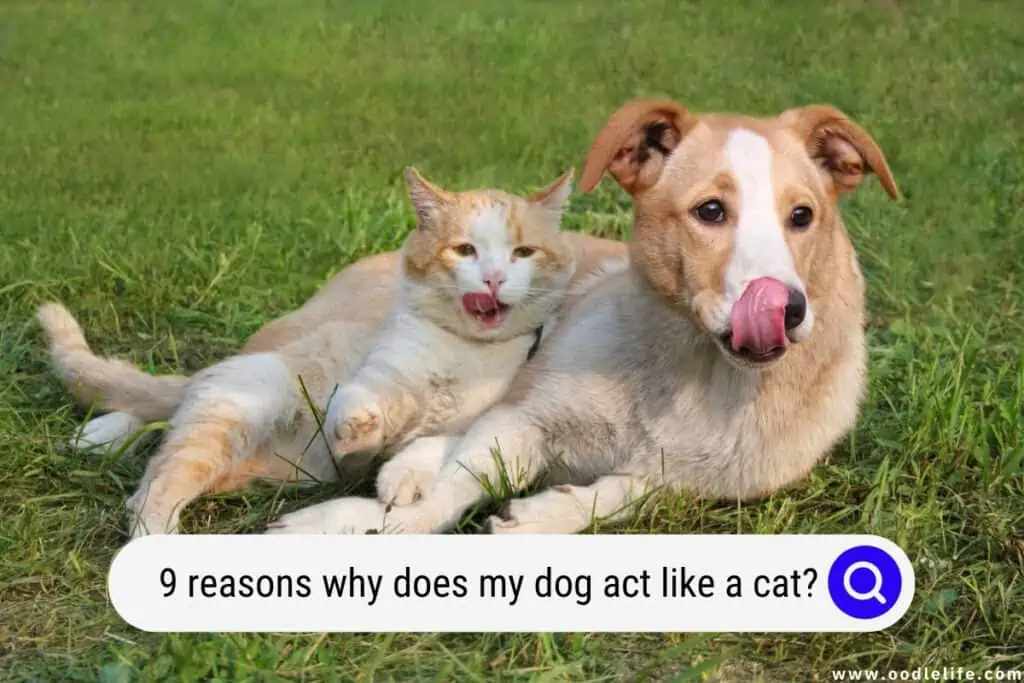
Why then, do some of these canine traitors show more feline traits than doggy ones? In this blog post, we’ll look at the bizarre behavior that some dogs exhibit that is more cat-like than dog and explore the potential reasons behind them.
Reasons Why Your Dog Acts Like A Cat
1. Your Dog Has An Independent Personality
Not all dogs are needy attention seekers that want your attention all the time. Many dogs need their own space, prefer to sleep alone, and value their “me time.” When it comes to affection, some dogs can get petted for hours, while others will simply walk away after a few seconds when they’ve had enough.
That doesn’t imply your dog doesn’t like you or respect you, just that they are more self-sufficient and want their own space now. Breeds like the Siberian Husky and Alaskan Malamute are known to be independent, but any dog of any breed can be aloof and reserved, even with their human.
The lack of enthusiasm is most associated with cats, but many dogs do the same. While it is not prevalent behavior, it is also not unusual. Other breeds that might be less intolerant of excessive amounts of attention and affection include Greyhounds, Basset Hounds, and working dogs.
There isn’t always much you can do if your dog has a naturally independent streak. Just like people, some extroverts enjoy the attention and will lap it up, while some introverts simply appreciate their alone time and will constantly seek to find it.
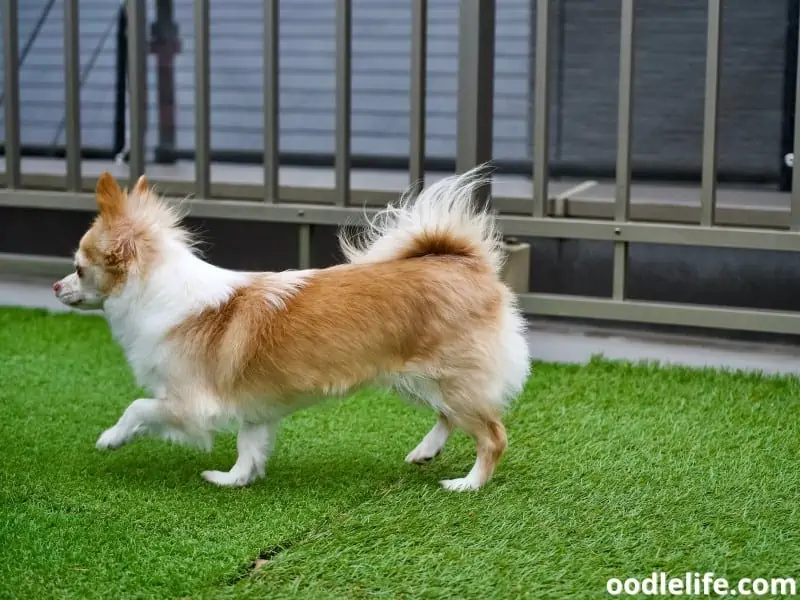
2. You Have A Cat
Do you have a cat at home? Dogs and cats can peacefully coexist if the introductions were done right. It not only breaks down preconceptions, but it can also lead to some unusual actions across the board.
Cats and dogs frequently learn behavior from each other. The older animal would probably be the most copied.
Puppies who live with an adult cat prefer to follow their lead. After all, dogs are pack creatures that will see the cat as their leader and seek to mimic its habits. If your dog moves into a multi-cat household, the consequences might be even more pronounced.
For example, a dog that watches a cat groom itself excessively might seek to emulate the behavior. Puppies are like sponges and their pack mentality will cause them to constantly try to fit in. While a dog may not think of performing any of these things on its own, it may be inspired if it sees a cat doing anything.
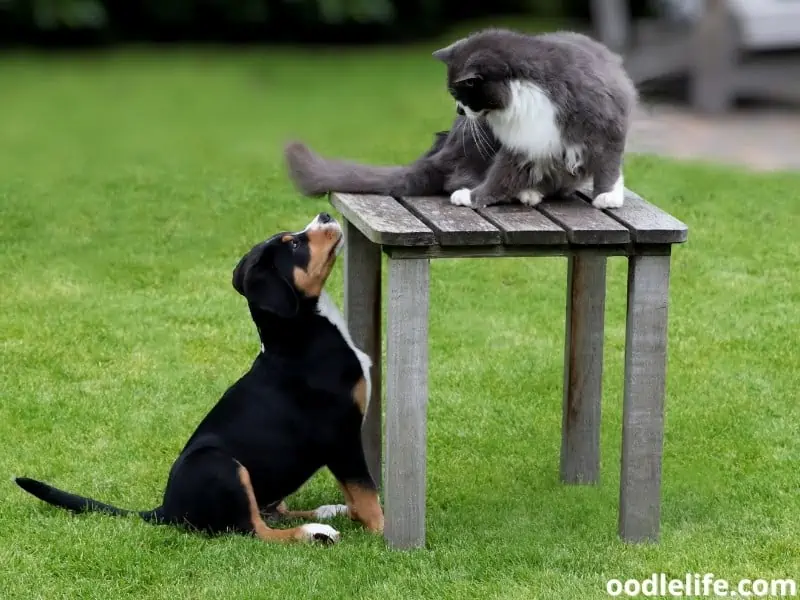
3. Your Dog Has A Skin Condition
Persistent licking and grooming may indicate skin diseases or mites. Cats lick themselves to maintain their coats shine and stay well-groomed. Dogs, on the other hand, typically have a precise cause for this action.
Whenever it comes to excessive licking, there might be more to it than your dog being dirty. Certain skin conditions lead to discomfort, and your dog licking themselves may be an effort to alleviate the suffering.
Unfortunately for you and them, licking the skin may aggravate the situation. Some breeds are more prone to skin problems than others, but all dogs are prone to irritation, yeast infections, mites, and other diseases. Take your dog to the vet right away to avoid any long-term consequences.
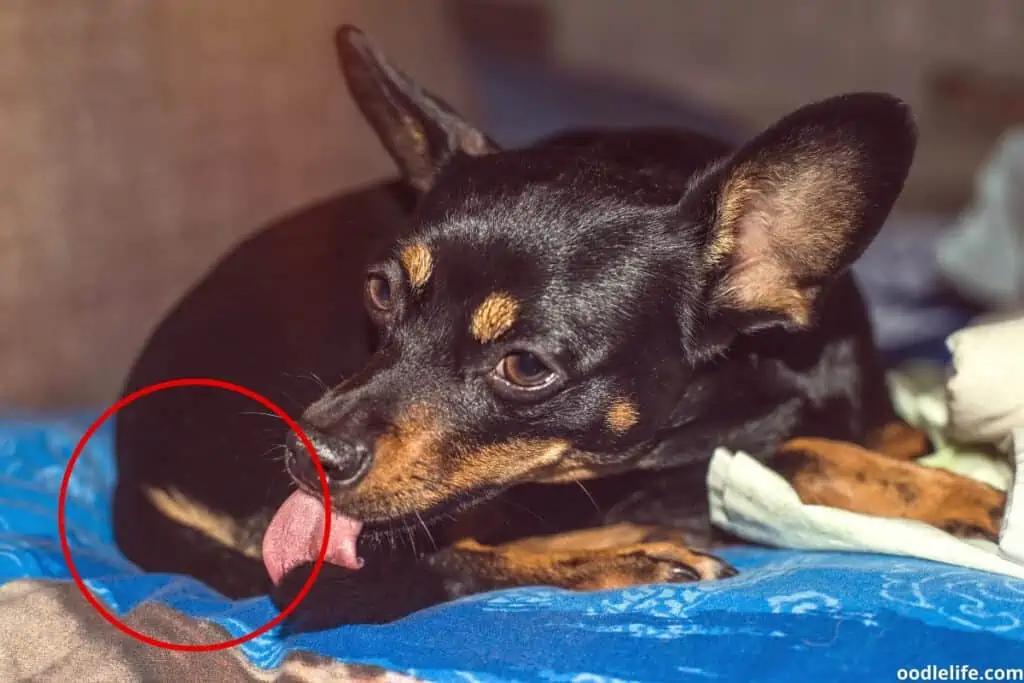
4. Your Dog Is Anxious Or Bored
Another possible reason for excessive licking is anxiety or boredom. When your dog is anxious, a few behaviors can emerge such as barking, chewing, digging, or licking. They may also be licking themselves because they are bored and are looking for something to do.
When dogs are anxious or bored, they rely on coping mechanisms that can be harmless or destructive. If these mechanisms become obsessive and destructive, you might want to nip the problem in the bud before it escalates into a full-blown disorder.
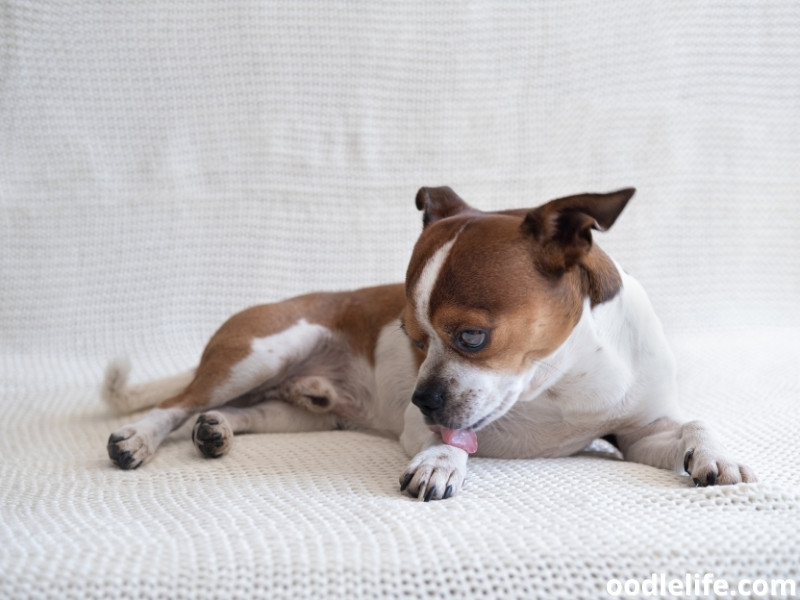
5. Your Dog Uses A Litter Box
Many breeders train puppies to use a litter box before they are completely housetrained and will go potty outside. Certain small breeds can continue to use a litter box throughout their lives like Yorkshire Terriers and Chihuahuas.
Litter-training is difficult, but certain dogs are quick to learn. Training a dog to use a litter box has many advantages. First, it can help to keep your home clean.
Second, it can prevent your dog from tracking dirt and feces into the house.
In addition, it can help to reduce the risk of accidents. Training a dog to use a litter box is a simple process that requires patience and positive reinforcement. With a little time and effort, you and your dog can enjoy all the benefits of this healthy and hygienic behavior.
Of course, if you train your dog to use a litter box, don’t be shocked if people comment on how cat-like your dog is!

6. Your Dog Needs Exercise
If your dog is hopping around your furniture and bouncing off the walls, it is possible that they need more exercise. When they are unable to expend their energy through walks, hikes, and runs, they’ll try to burn off excess energy indoors, by running around the house and hopping from couch to couch, much like a cat.
Dogs are active creatures by nature, and they require a considerable amount of exercise to stay healthy and happy. A lack of exercise can lead to several problems, including obesity, joint stiffness, and behavioral issues.
Regular exercise helps to keep dogs fit and provides them with the opportunity to burn off excess energy. It also helps to strengthen muscles and improve flexibility. Furthermore, exercise is a great way for dogs to socialize with other dogs and people.
In the absence of exercise outdoors on their daily walks, perhaps because of the lack of time or inclement weather, your dog may exercise at home by jumping on the couch or strolling on the edge of the sofa. All of these acts need concentration, balance, agility, and stamina.
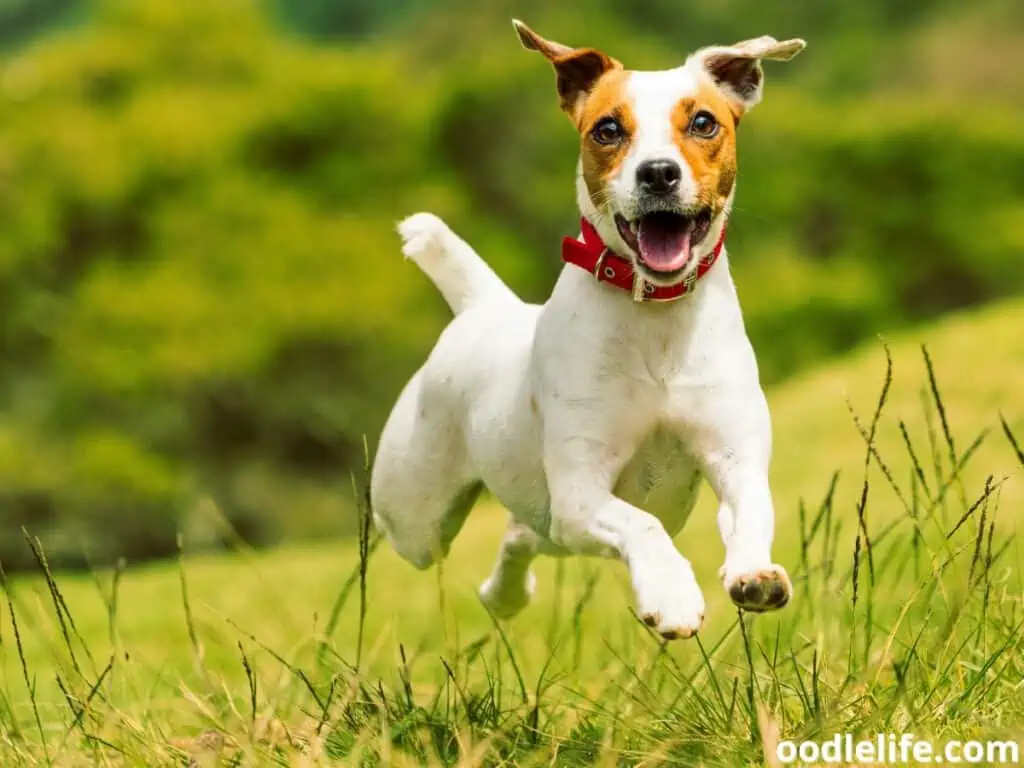
7. Your Dog Wants A Birds-Eye View
Just like cats have a perch where they watch the world go back, dogs also want a good vantage point to get a clear view of everything going on. Some small dogs might be unable to get high enough for them to gain an advantage, and it is not uncommon to see them try!
They might hop across your furniture and jump up on chairs and tables simply to get a better point of view. In addition, some cheeky buggers might do the same to access and steal food and snacks from your kitchen.
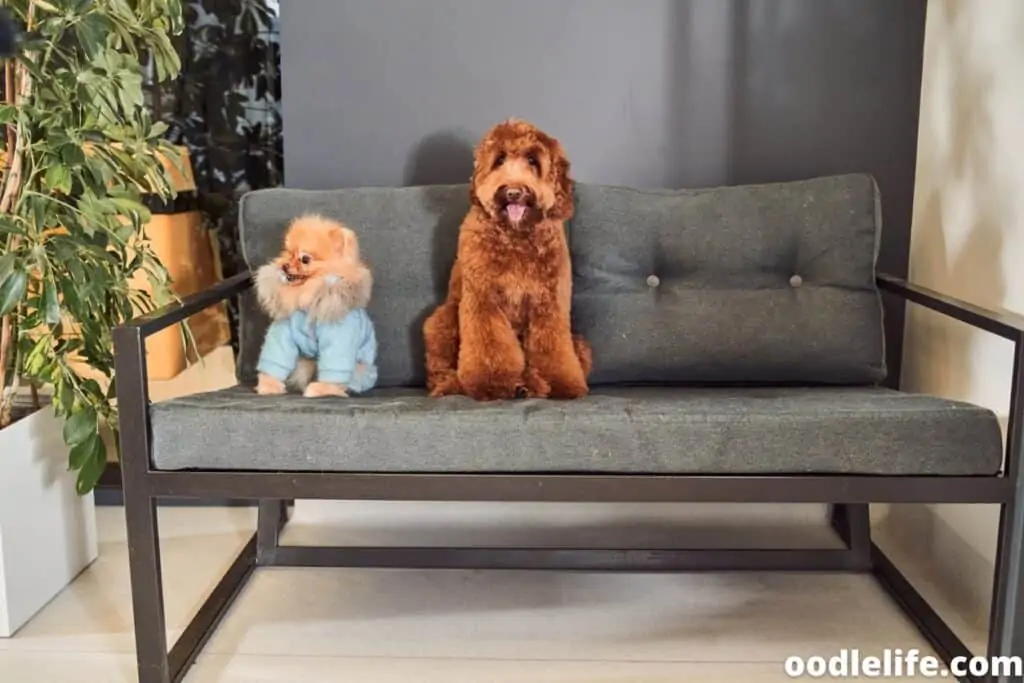
8. Your Dog Wants Attention
Dogs crave our attention and some will do anything to get it. A dog’s ongoing need for love causes them to perform a variety of activities, which is why they constantly lean on you or bounce off your furniture in an attempt to get your attention.
It is not unusual for a dog to mimic the feline actions of a cat. Especially if the dog discovers certain benefits such as leaping on your lap and cuddling up there.
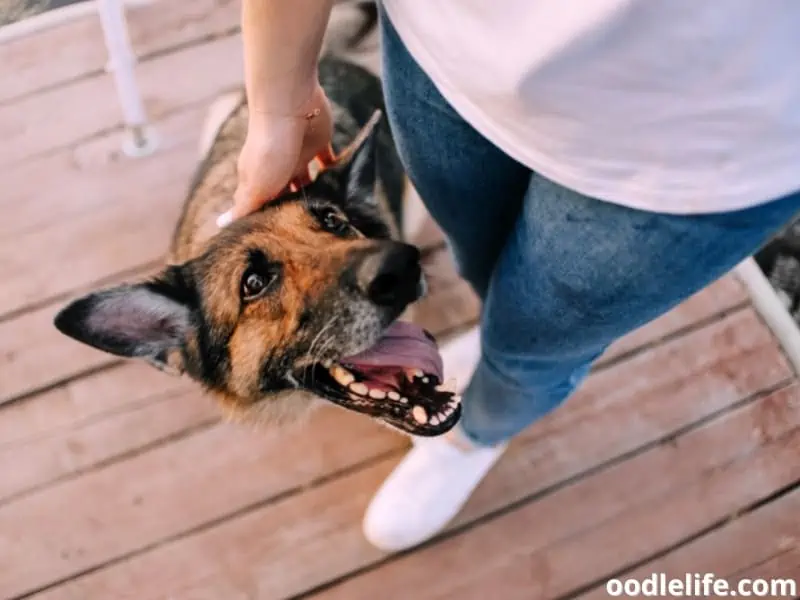
9. Your Dog Is Playing
Both cats and dogs are hunters, but cats are the more prolific hunters around. They stalk, swat, and pin prey with their paws and jaws. Dogs do the same, albeit to a lesser degree.
They too, have prey drive, especially some hunting and herding breeds.
Their instincts often lead them to swat at things with their paws. This behavior usually indicates that the dog is trying to catch or kill its prey. In the wild, dogs typically hunt in packs, and one of the ways they work together is by using their paw swats to disorient and kill their prey.
When a dog swats at something, it is usually trying to create an opening for the rest of the pack to attack. This instinct often carries over to domestic dogs, which is why you may sometimes see your dog swatting at your cat or another small animal. While this behavior may be instinctual, it is also important to teach your dog not to swat at people or other animals, as it can lead to serious injuries.
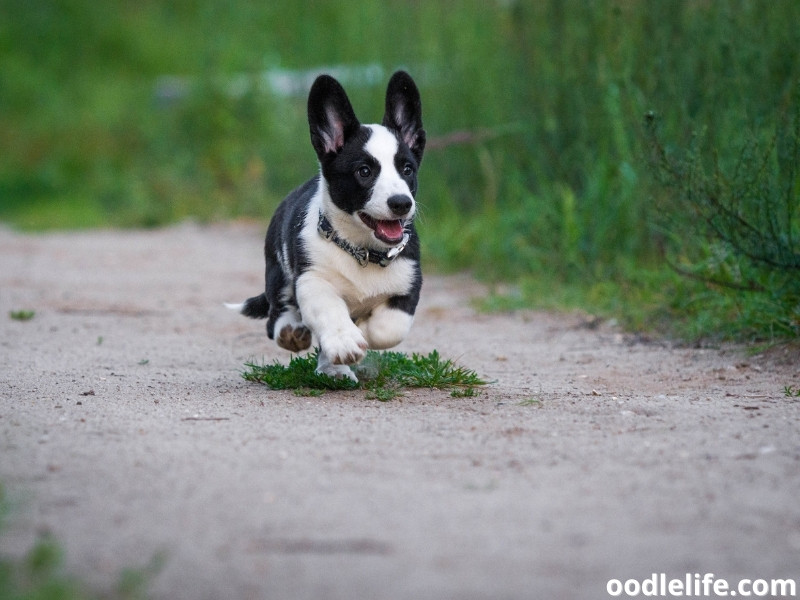
Final Thoughts
There you go! Some dogs are so cat-like that their behavior resembles that of their feline adversaries way more than their canine counterparts. Some breeds are also more predisposed to feline behavior such as Shiba Inus, Manchester Terriers, Whippets, and Basenjis.
The agile, athletic dogs seem to exhibit more cat-like behavior than the goofy, clumsy ones. In short, your dog isn’t having an identity crisis, but he or she is merely exhibiting certain doggy behavior that we see as more cat than dog.